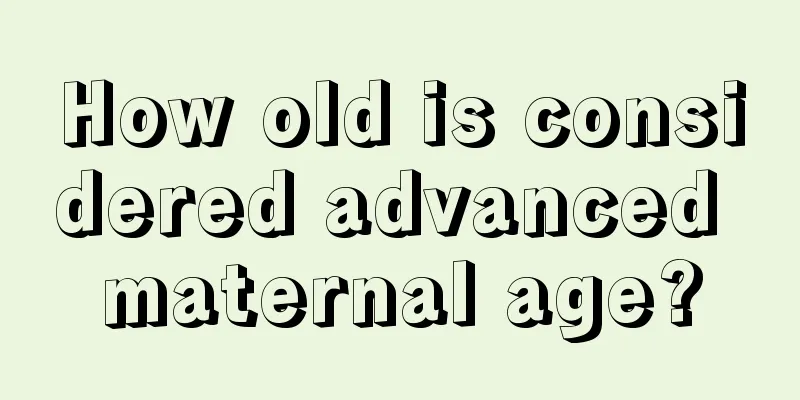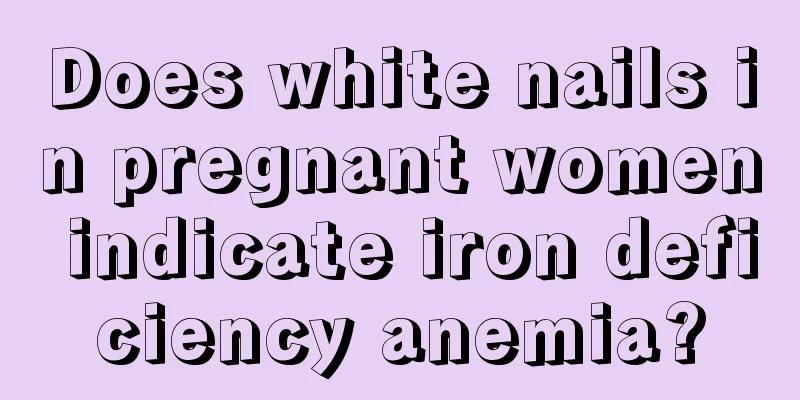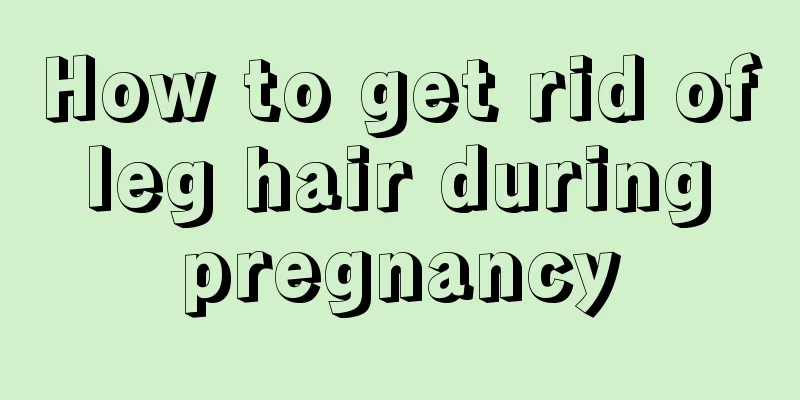How old is considered advanced maternal age?

|
The term "elderly mother" should be very common in today's society, because many girls nowadays tend to marry and have children later. When they give birth at a certain age, they will be called elderly mothers. So, how old is considered an advanced mother? This question is a matter of opinion in society. Many people have different definitions of advanced mothers, but professionals often have different definitions. In fact, late marriage and late childbirth are good. To some extent, they alleviate the housing and work pressures in our country. However, if you don’t get married and have children after a certain age, it will be bad for the baby’s growth and development, because by that time, your physical condition will be completely different from before. Let’s talk about the question of how old is considered an advanced maternal age. Generally speaking, the so-called older mothers refer to mothers who are over 35 years old and are pregnant for the first time. Pregnant women over 35 years old must undergo routine prenatal diagnosis and be treated as high-risk pregnancies. In fact, giving birth at a later age is dangerous for both the mother and the child. Therefore, experts do not recommend giving birth at a later age. There is a saying among women nowadays that nutrition is much better than before, and women's menopause has been pushed back 4 years than before, so should the definition of "advanced age" be postponed by another 4 years? Experts say that the aging of egg cells is uncontrollable, so there is no saying that "advanced age" can be pushed back yet. Since there is advanced age, there is also the right age. For women, the best time to have children is between 23 and 29 years old. During this period, women are psychologically and physiologically mature, making them most suitable for conceiving a baby. Advanced age brings many dangers to mothers. Experts believe that older women are more likely to have miscarriages. For women of childbearing age, the miscarriage rate is 12%, while for older women it reaches 31%. Giving birth at an advanced age can also have adverse consequences after delivery. Because the mother does not have enough physical strength and her physical recovery after delivery is not as good as that of non-elderly mothers, the functions of the reproductive tract and reproductive organs decline, and some complications may also occur. The main hazards of pregnancy after the age of 35 are as follows: 1. Harm to the mother: the mother is prone to diseases such as gestational hypertension and preeclampsia; due to giving birth at an advanced age, the elasticity of joint ligament tissues is poor, and the uterus is prone to weak contractions, leading to dystocia; the mother is prone to postpartum syndrome and postpartum anemia; and the body is prone to weakness. 2. Harm to children: When women reach middle age, the joints of their ischium, pubis, ilium and cuboid bones have basically ossified, forming a fixed pelvis. Therefore, when the fetus is delivered, it is easy to cause delivery difficulties, which greatly increases the risk of various complications for the mother herself; it is also very easy to cause the fetus to be retained in the uterus and cause fetal distress. This distress syndrome is threatening to the fetus. In mild cases, it can cause ischemia and hypoxia of the fetal heart and brain, and even lead to irreversible brain damage. In severe cases, it can cause fatal suffocation. Neonatal injuries are prone to occur during delivery; neonatal asphyxia is prone to occur; the incidence of fetal malformations increases. Therefore, through the understanding of the above article, we can have a clear definition of older pregnant women. Because in the eyes of experts, pregnant women over 35 years old are usually called elderly mothers. The hazards to older mothers include: pregnant women themselves are very prone to gestational hypertension, anemia after delivery, etc.; the hazards to children include: symptoms of dystocia are prone to occur, and the child's brain may be deprived of oxygen, resulting in brain damage. Therefore, don’t pursue late marriage and late childbirth too much. It is best to give birth to children before the age of 35. |
<<: Causes of sudden heavy menstrual flow
>>: Effects of painless abortion on the body
Recommend
What are the symptoms of vaginal warts?
In this world where development is accelerating a...
How to help your baby choose a suitable and cost-effective milk powder?
Faced with the dazzling array of milk powders on ...
How to choose whether the Green Treasure melon is sweet? The nutritional value of Green Treasure melon
Green Treasure Melon is also known as Emerald Mel...
What to do if your period doesn't come while you are losing weight
Many female friends will adopt the method of diet...
What to do if the endometrial thickness is 0.4
We all know that the female uterus is the cradle ...
There is still light red blood after menstruation
Menstruation, to put it simply, is the condition ...
Uncovering Asthma, a "little monster" lurking around us|Things about Asthma①
After the National Day, autumn has gradually deep...
Have you paid attention to these "bullshit" things?
Whether at home, in the elevator, on the subway, ...
Do you need to look at the brand when buying eggs? What should you look at when buying eggs?
As we all know, eggs are a common type of egg foo...
Vulvar dryness and itching
The most common diseases that occur in women are ...
Do you know the correct breast enhancement method?
Breasts are the focus of women's self-charm. ...
What are the benefits of coconut chicken soup? Does coconut chicken increase or decrease internal heat?
Coconut chicken soup has the effect of strengthen...
Female anal cramping pain
Key reminder: In daily life, we often see patient...
Can human nipple 16 positive be cured?
I believe everyone has heard of human papillomavi...
What is the best medicine for uterine inflammation?
Uterine inflammation is a common disease. General...





![[Health and wellness] One leaf tells us that autumn is coming, and here is how to keep fit in autumn↓↓](/upload/images/67f113cdce4a4.webp)



